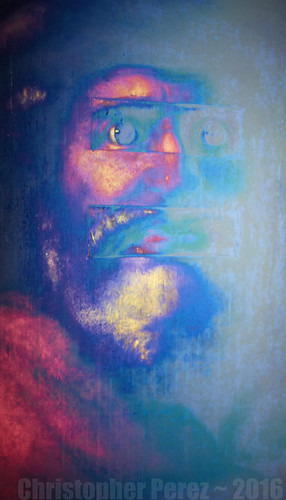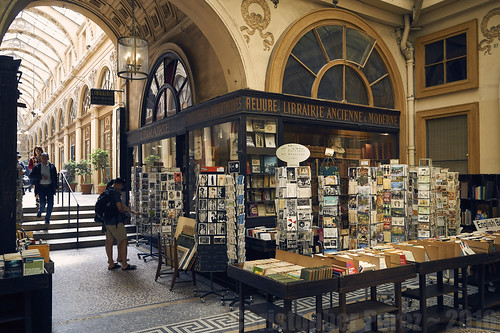Is there trouble in River City?
In my last post I looked at the changing environment of photography from the perspective of camera equipment as it meets changing consumer demands and imaging habits. For this post, I'd like to comment on the changing environment of photography from the perspective of what people actually produce with their imaging gear.
There was a time when photography strived to imitate accepted standards of art. For example and as part of a global art "secessionist movement" in the late 1800's photographers strove to create "painterly" works of a specific style. Early issues of Camera Work magazine were filled with photo secessionist "art".
Not long after, one of the leading proponents who was, in fact, the editor himself of Camera Work magazine declared the "photo secessionist" movement to be dead. It was declared that henceforth good and proper photography would no longer re-interpret the world through heavy image manipulation post shutter click. Rather, photography would now be the domain of capturing and interpreting the "real".
Photo-realism became the norm. Yet it was an all too often overlooked fact that photo-realism was completely dependant on imaging materials that themselves selectively interpreted the world _for_ the photographer. Imaging materials, for example, were limited to certain spectrums of light. Later when color films became widely available, there were certain color shifts that, well, narrowly interpreted the world based on the manufacturers film production formulas.
Increasingly, the materials we used to create images became more sophisticated. Dry plate replaced wet plate materials. Celluloid backed "film" replaced glass backed dry plate. Synthetic backed film replaced celluloid film. Smaller cameras joined old large format cameras as potential tools of choice for an artist. Small cameras added exposure reading capabilities, followed by automated application of these readings, followed by automatic focusing of lenses, followed by the replacement of film with digital sensors, followed by the integration of all these automated imaging capabilities into, of all things, telephones. Et voila! How's that for a compressed history of photography?
Yet none of these things prevented imaging artists from interpreting the world around them and presenting ideas with skill and training that was based on or in response to classic art concepts. Lighting and composition in photography were always serious topics. I strongly suspect there was a reason for this.
When I look at what this marvelous automation has brought, I expected to see serious artists freed from the constraints of learning distracting imaging technologies and and camera control techniques. I expected that the freedom to create would lead to a large number of talented serious working artists producing amazing images to the delight and wonderment of the rest of us.
Much to my disappointment I'm not sure that's how things turned out.
Instead, I'm shocked by the award winning drivel and dreck that passes for photography these days. Just look at your Facebook feed or Instagram stream or (and this really hurts as these folks should really know better) your updated daily Flickr "Explore."
If you're an Old Fart like me, you might soon be depressed at the current State of Things. To (sadly and terribly) drive the point home, have a look at what passes for winners in the British Journal of Photography. Mind you, this is supposedly "breakthrough" work. What does any of it mean? What does any of it say? To me it says some people have not the faintest clue that composition and lighting can, and dare I say should, be controlled.
If I didn't know artists like Ted Mashima and Ray Bidegain or know of Sally de Witt, Tim Rudman, Beth Moon, Kerik Kouklis, John Wimberly and Sandy King I would think photography was incapable of any and all artistic expression. If I didn't read Lenswork Magazine on a regular basis I'd think all photographers were lazy "selfie" snapping slobs or expensive camera carrying posers who had no sense of what was possible and what was theirs to compose, manage and create.
Riddle me this, Batman: Where are we as viewers and where, exactly, is photography headed?
Seriously. I'd like to know.

In my last post I looked at the changing environment of photography from the perspective of camera equipment as it meets changing consumer demands and imaging habits. For this post, I'd like to comment on the changing environment of photography from the perspective of what people actually produce with their imaging gear.
There was a time when photography strived to imitate accepted standards of art. For example and as part of a global art "secessionist movement" in the late 1800's photographers strove to create "painterly" works of a specific style. Early issues of Camera Work magazine were filled with photo secessionist "art".
Not long after, one of the leading proponents who was, in fact, the editor himself of Camera Work magazine declared the "photo secessionist" movement to be dead. It was declared that henceforth good and proper photography would no longer re-interpret the world through heavy image manipulation post shutter click. Rather, photography would now be the domain of capturing and interpreting the "real".
Photo-realism became the norm. Yet it was an all too often overlooked fact that photo-realism was completely dependant on imaging materials that themselves selectively interpreted the world _for_ the photographer. Imaging materials, for example, were limited to certain spectrums of light. Later when color films became widely available, there were certain color shifts that, well, narrowly interpreted the world based on the manufacturers film production formulas.
Increasingly, the materials we used to create images became more sophisticated. Dry plate replaced wet plate materials. Celluloid backed "film" replaced glass backed dry plate. Synthetic backed film replaced celluloid film. Smaller cameras joined old large format cameras as potential tools of choice for an artist. Small cameras added exposure reading capabilities, followed by automated application of these readings, followed by automatic focusing of lenses, followed by the replacement of film with digital sensors, followed by the integration of all these automated imaging capabilities into, of all things, telephones. Et voila! How's that for a compressed history of photography?
Yet none of these things prevented imaging artists from interpreting the world around them and presenting ideas with skill and training that was based on or in response to classic art concepts. Lighting and composition in photography were always serious topics. I strongly suspect there was a reason for this.
When I look at what this marvelous automation has brought, I expected to see serious artists freed from the constraints of learning distracting imaging technologies and and camera control techniques. I expected that the freedom to create would lead to a large number of talented serious working artists producing amazing images to the delight and wonderment of the rest of us.
Much to my disappointment I'm not sure that's how things turned out.
Instead, I'm shocked by the award winning drivel and dreck that passes for photography these days. Just look at your Facebook feed or Instagram stream or (and this really hurts as these folks should really know better) your updated daily Flickr "Explore."
If you're an Old Fart like me, you might soon be depressed at the current State of Things. To (sadly and terribly) drive the point home, have a look at what passes for winners in the British Journal of Photography. Mind you, this is supposedly "breakthrough" work. What does any of it mean? What does any of it say? To me it says some people have not the faintest clue that composition and lighting can, and dare I say should, be controlled.
If I didn't know artists like Ted Mashima and Ray Bidegain or know of Sally de Witt, Tim Rudman, Beth Moon, Kerik Kouklis, John Wimberly and Sandy King I would think photography was incapable of any and all artistic expression. If I didn't read Lenswork Magazine on a regular basis I'd think all photographers were lazy "selfie" snapping slobs or expensive camera carrying posers who had no sense of what was possible and what was theirs to compose, manage and create.
Riddle me this, Batman: Where are we as viewers and where, exactly, is photography headed?
Seriously. I'd like to know.

